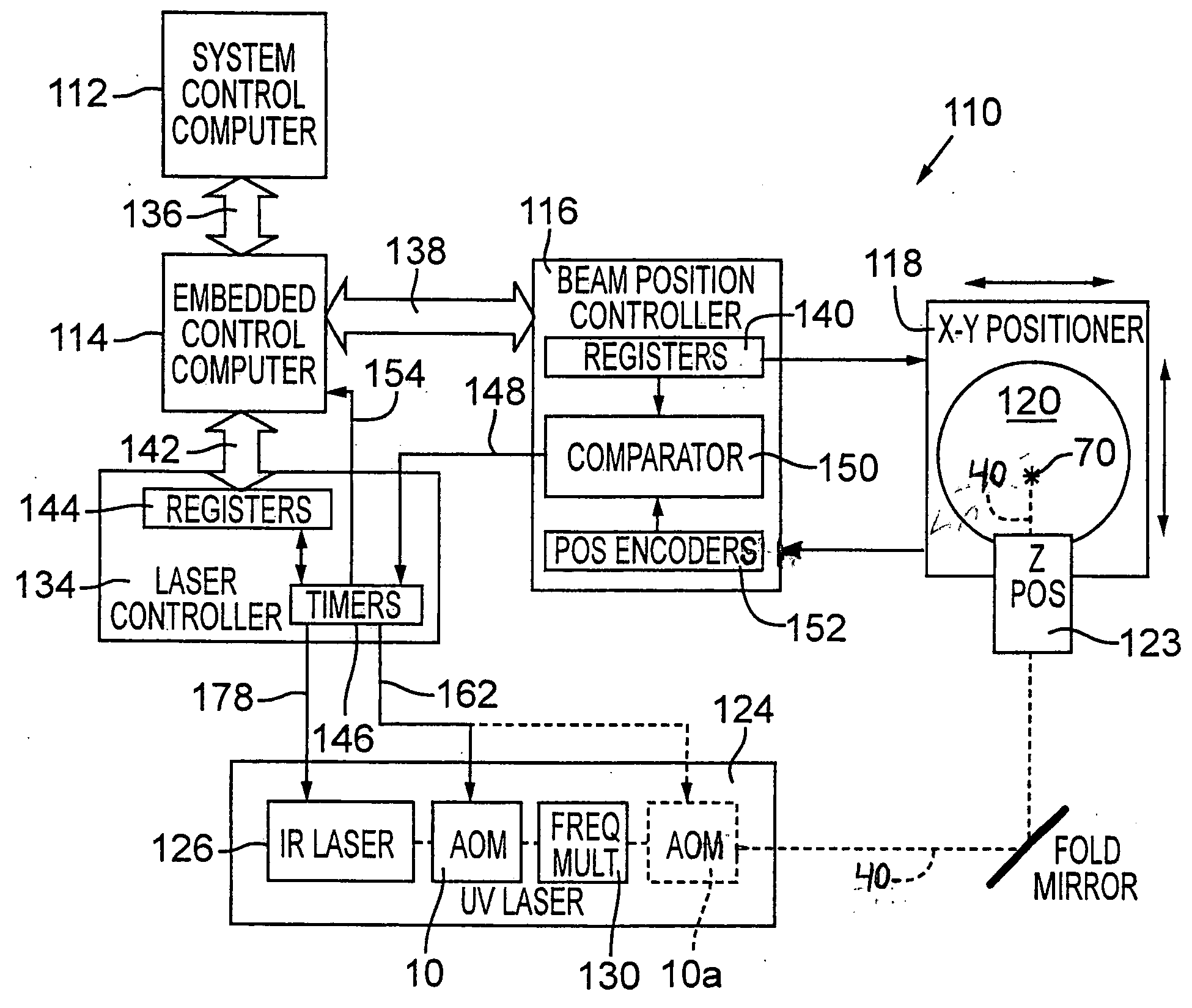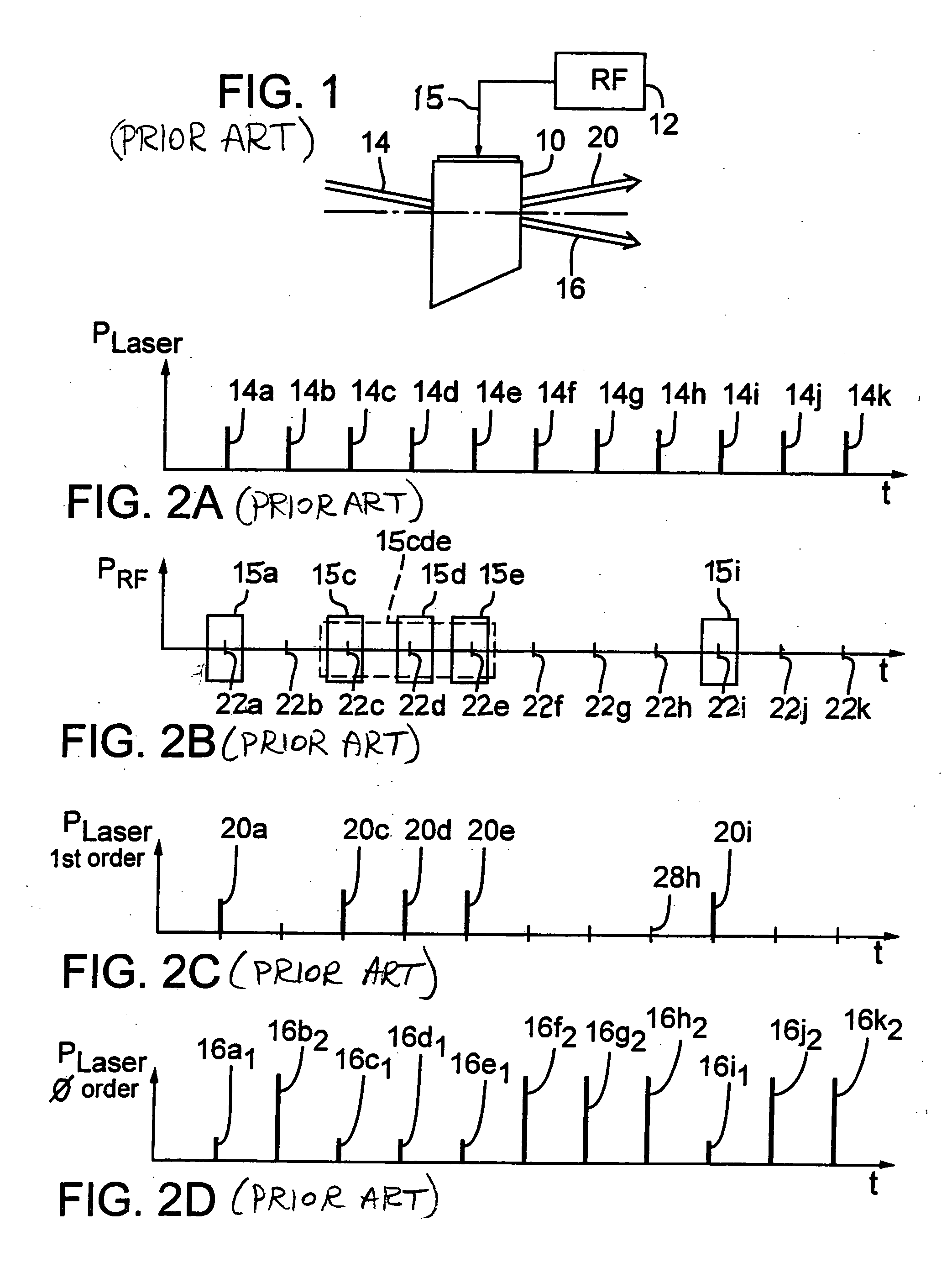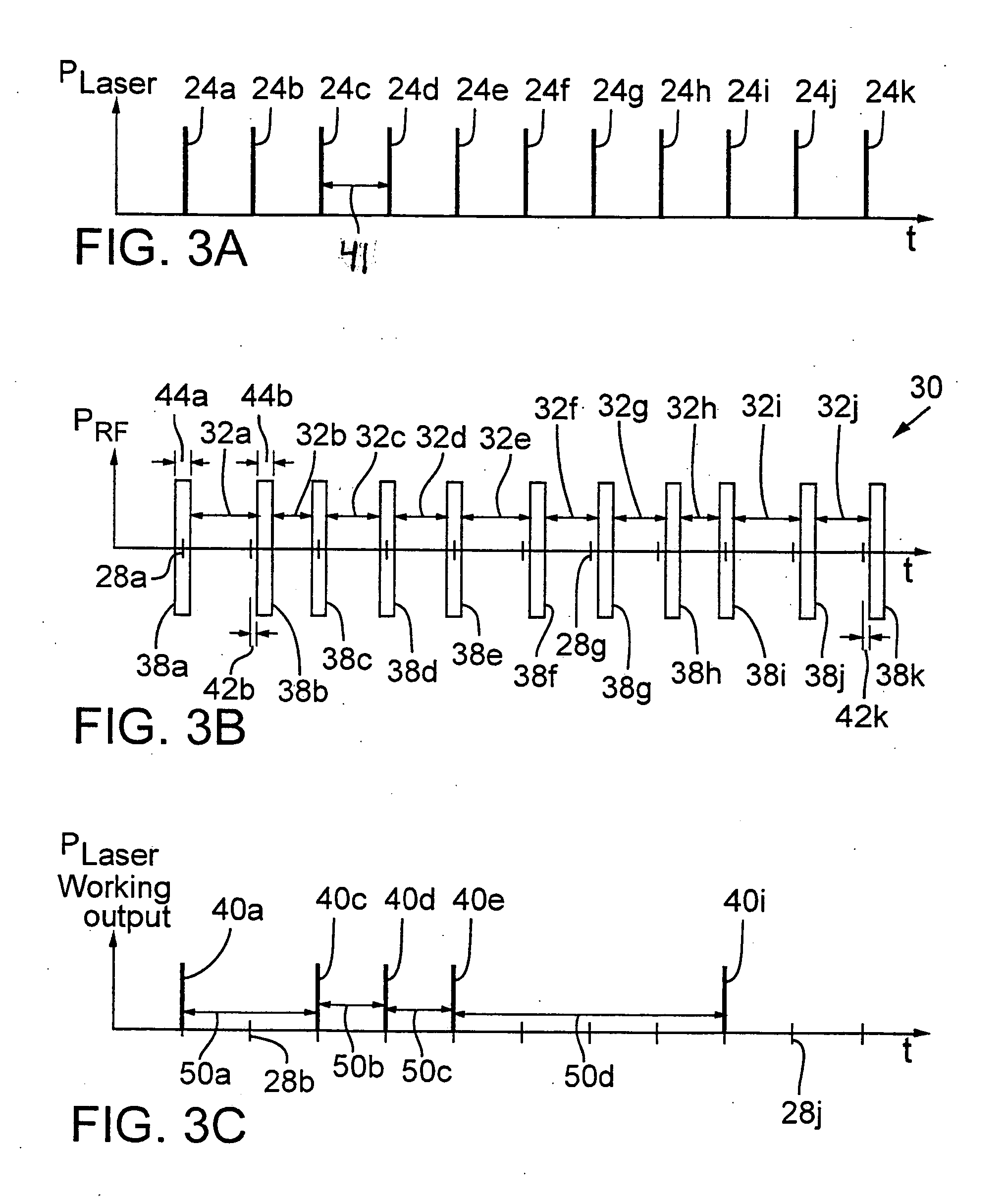High energy pulse suppression method
a pulse suppression and high-energy technology, applied in the field of lasers, can solve the problems of inability to completely sever the link, inability to completely remove the link, and inability to damage the passivation structure or the silicon substrate, and achieve the effect of stable pulse-to-pulse working laser pulse energy and reducing the rate of energy buildup
- Summary
- Abstract
- Description
- Claims
- Application Information
AI Technical Summary
Benefits of technology
Problems solved by technology
Method used
Image
Examples
Embodiment Construction
[0039]FIGS. 3A-3C (collectively, FIG. 3) show corresponding timing graphs of laser outputs 24a-24k (collectively, laser outputs 24), RF pulses 38a-38k (collectively, RF pulses 38) applied to prior art AOM 10, and working laser outputs 40a, 40c, 40d, 40e, and 40i (collectively, working laser outputs 40). In particular, FIG. 3A shows laser outputs 24a-24k that are emitted by a laser (not shown) at a constant repetition rate and separated by substantially identical laser output intervals 41. In typical embodiments, the laser output repetition rate may range from about 1 KHz up to about 500 KHz. Exemplary laser output repetition rates range from about 25 KHz to greater than about 100 KHz. For link processing embodiments, each of working laser outputs 40 preferably includes a single laser pulse having a multiple nanosecond pulse width. However, skilled persons will recognize that each of working laser outputs 40 may include a burst of one or more laser pulses each having an ultrashort pu...
PUM
| Property | Measurement | Unit |
|---|---|---|
| wavelengths | aaaaa | aaaaa |
| energy wavelengths | aaaaa | aaaaa |
| wavelengths | aaaaa | aaaaa |
Abstract
Description
Claims
Application Information
 Login to View More
Login to View More - R&D
- Intellectual Property
- Life Sciences
- Materials
- Tech Scout
- Unparalleled Data Quality
- Higher Quality Content
- 60% Fewer Hallucinations
Browse by: Latest US Patents, China's latest patents, Technical Efficacy Thesaurus, Application Domain, Technology Topic, Popular Technical Reports.
© 2025 PatSnap. All rights reserved.Legal|Privacy policy|Modern Slavery Act Transparency Statement|Sitemap|About US| Contact US: help@patsnap.com



